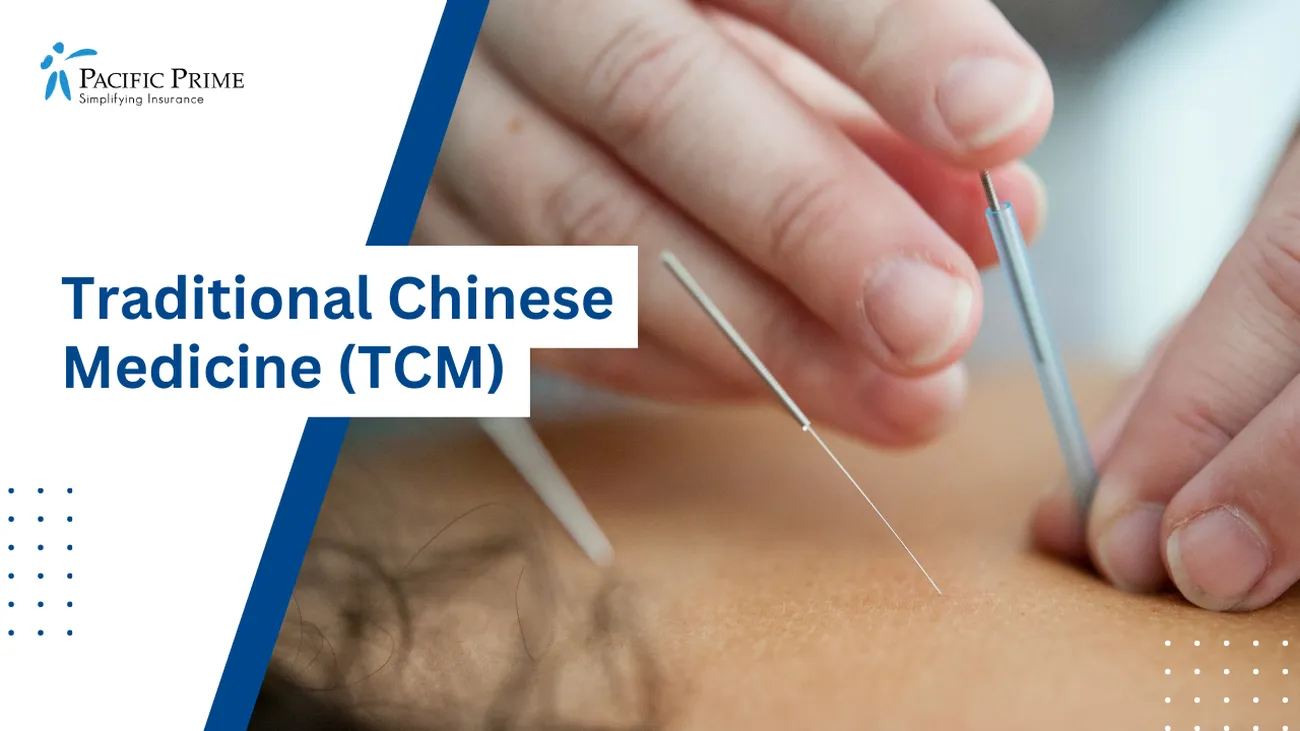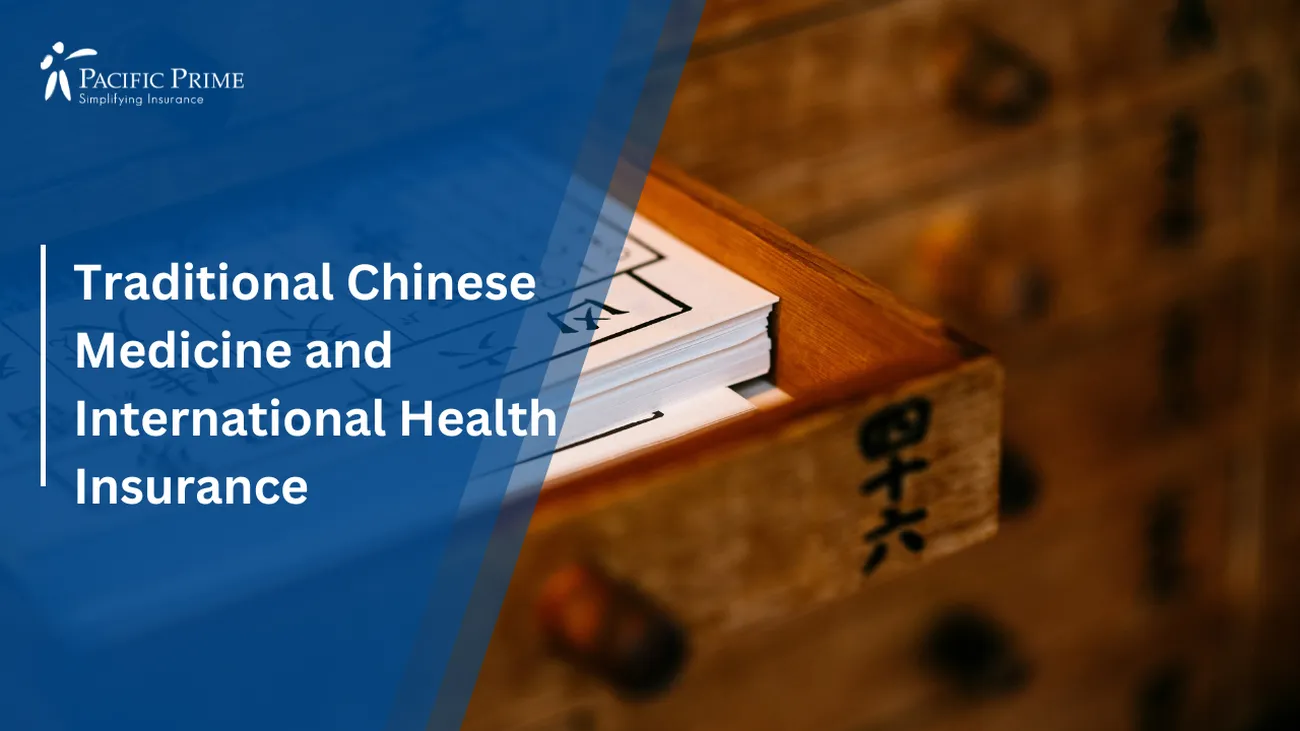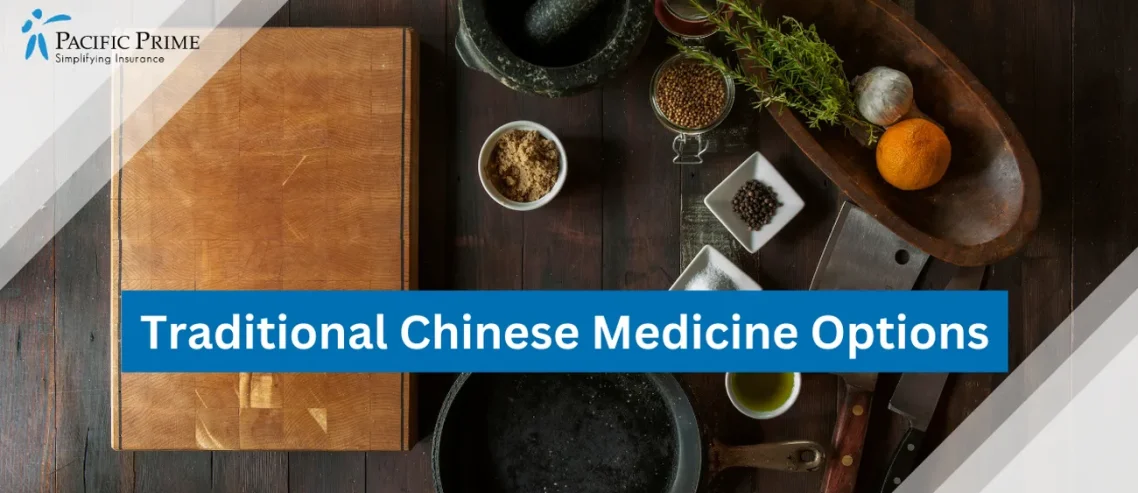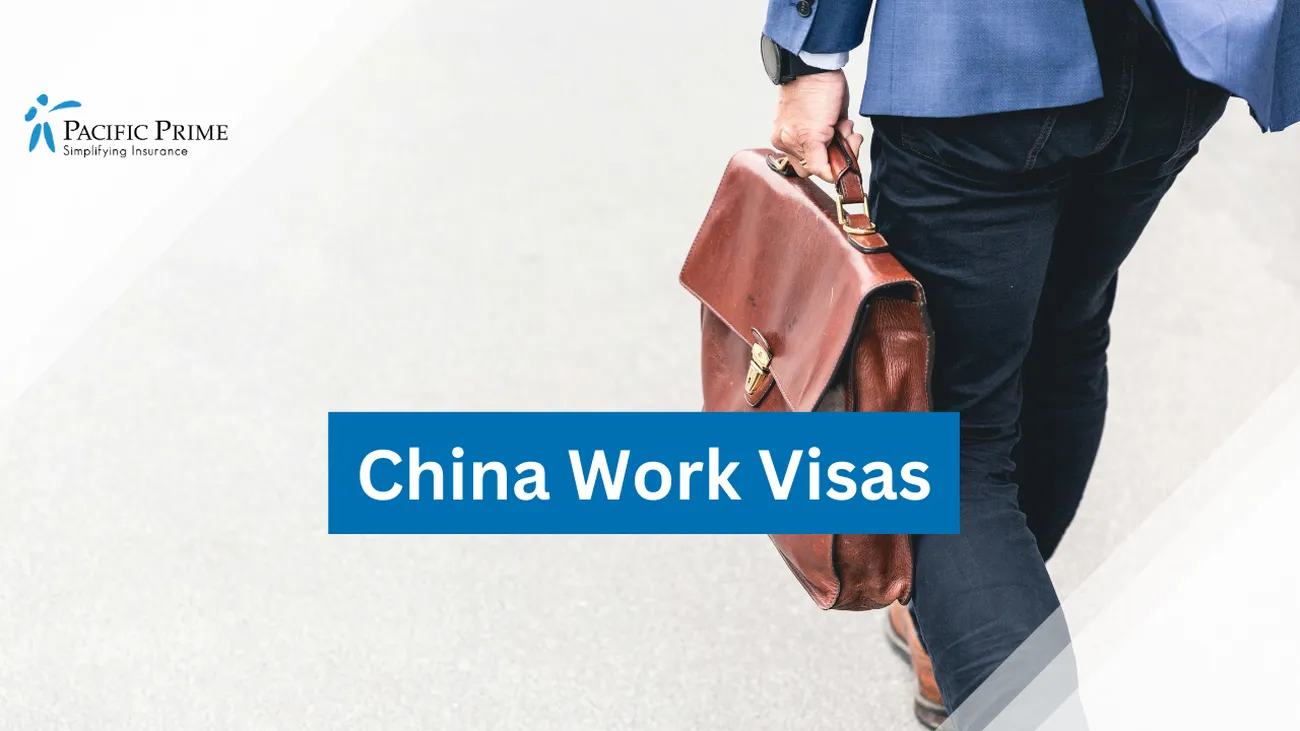Exploring Traditional Chinese Medicine Options for Expats: A Holistic Approach
Expats exploring traditional Chinese medicine (TCM) should understand it as a holistic approach to health management, from acute symptom relief to prevention. The influence of TCM in the healthcare industry has seen more legitimization, which could affect your healthcare decisions as an expat in China.
Discover the world's top
health insurers.
Compare quotes with
a click of the button.
Wonder what is the TCM landscape in China? Do you know what are the common practices of TCM in China and the effect of them on your health? Are you aware of the gateways to access such services in China as an expat such as health insurance?
In this Pacific Prime article, we’ll walk you through the world of TCM, and uncover the effect of its common practices on your physical and mental health; then we’ll explore your health insurance options to ensure access to the mysterious ground of the medical field.
What is Traditional Chinese Medicine (TCM)?

Traditional Chinese Medicine is a comprehensive medical system that originates in China and has been practiced for thousands of years. This was a time when ancient medical practitioners would advise on and perform techniques for patients to improve acute and chronic ailments.
TCM treatment adheres to the core concept and functioning of the body’s vital energy – qi. Whether or not qi is balanced within the body is what Chinese practitioners are looking at.
There are five primary functions that qi has on the body:
- Systematic body function
- Temperature regulation
- Immunity
- Containment of bodily fluids
- Transformation of nutrients into blood and other bodily fluids
For this reason, TCM concerns the flow, harnessing, release, build-up, balancing, and creation of qi to restore health.
4 Key TCM Principles
TCM treatments have recently seen more integration with Western medical practices, yet the core philosophy of TCM takes on a different approach when compared to its Western counterpart. The four key principles pillaring TCM are:
- Nature as a Part of your Entity: This principle states that your environment, such as geographical location, the weather, the time of the day, age, and even genetics, are all influencing factors of your body and health.
- Your Body is an Integrated Whole: It is believed that the different parts of your body and your mental state and emotions are fundamentally interconnected, forming a complex and intricate system.
- Humans Have Innate Self-healing Abilities: Self-healing is the core of TCM treatments. Energy flow and blood circulation are targeted by TCM treatments to unlock your body’s ability to self-heal spontaneously instead of targeting and suppressing certain symptoms.
- Prevention is the Best Cure: TCM is widely believed to protect your body from health complications before symptom manifestation. Practitioners excel at interpreting signs reflected on your body before illness symptoms appear.
4 Steps of a Typical TCM Consultation
A typical traditional Chinese medicine consultation embodies four main types of diagnostic methods – Inspection, auscultation and olfaction, interrogation, and palpation. Indications from the consultation can be used to differentiate the problem of concern and make respective solutions.
- Inspection: The first step is to observe all the visible signs and external conditions of the patients, such as their vitality, color, appearance, secretions, and excretions.
- Auscultation and Olfaction: Second is to utilize the senses of listening or smelling to gather information about the patient’s voice, breathing, and odor, which potentially give out more indications of health issues than simply observation.
- Interrogation: Third is the questioning about the patient’s family history, major concerns, lifestyles, and habits. This helps the practitioner to relate and rationalize the health issue to the most likely reason.
- Palpation: Pulse examination empowers the practitioner with the ability to examine a patient’s pathological changes of internal organs, using three fingers touching on special positions of radial artery pulse.
6 Common Traditional Chinese Medicine Practices
Should you be diagnosed as unhealthy after a TCM consultation, you are likely to be offered one or more of these six common TCM practices: acupuncture, cupping, moxibustion, tui na massage, bone setting, and Chinese herbal medicine. Below are short descriptions of what they do to your body.
Acupuncture
Acupuncture is a key component of TCM which involves the strategic insertion of hair-thin needles into the body’s acupoints (specific points in the energy pathway). According to TCM, qi is believed to flow through pathways in your body.
If any of these pathways are blocked, one is expected to manifest physical or mental health problems. By inserting needles into acupoints, your energy flow will re-balance. Be anticipated that your practitioner may gently manipulate the needles with movement, heat, or electric current to facilitate the treatment.
Cupping
Cupping utilizes heat and suction to invigorate the qi flow, creating benefits from localized pain relief and muscle relaxation to removing toxins and boosting immunity.
Your practitioner will warm the air in a cup before placing it upside down on your skin, usually at attachable surfaces at your back. As the air cools, it creates a vacuum that lifts your skin and expands blood vessels.
Don’t be surprised if you find strange circular marks after the therapy – it means the treatment is working its magic!
Moxibustion
Moxibustion is a form of heat therapy that revolves around burning mugwort leaves to improve qi flow, treat aches and pains, and digestive problems, and strengthen immunity. It involves burning moxa, a cone or stick made of ground mugwort leaves, on or near your body’s meridians and acupuncture points.
Practitioners believe that the treatment is particularly effective to help with chronic diseases such as asthma, and nasal allergies, therefore most TCM clinics will offer to perform annual moxibustion as a general preventative treatment.
Tui Na Massage
Tui Na Massage comprises the rolling method to target soft tissue and relieve joint and muscle sprains, and the one-finger pushing method to stimulate acupoints. The combination of movements can help establish a more harmonious qi and stimulate self-healing.
It is believed to be effective for localized pain, and muscle aches. Some may also find themselves more relieved and their sleep quality improved. If you experience serious back pains, certain chiropractic techniques may also be used.
Bone Setting
Bone setting is the manipulation of joints, tendons, and ligaments to fix the misaligned parts of the skeletal system. It is primarily used to treat bone fractures, concussions, sprains, soft tissue problems, and even joint dislocations.
To your surprise, the treatment can also be used to treat other symptoms that modern chiropractic or osteopathy is unable to target, such as stomach ache, dizziness, and menstrual pain.
Chinese Herbal Medicines
Chinese herbal medicines are the use of natural products (plant-based, minerals, and animal products) to balance the body’s internal environment that causes the symptoms of concern. Your TCM doctor will go through a thorough consultation with you and work out the best combination of ingredients.
Specific ingredients are tailored for each individual. Even for patients with the same health issues, the ingredients selected could be different depending on their qi balance and body properties.
Traditional Chinese Medicine: A Holistic Approach to Health
With the incorporation of Chinese medicine into the healthcare system, patients have been receiving Eastern practices to improve medical outcomes, along with mainstream Western medicine. TCM has earned its place in the healthcare system, with growing evidence of effectiveness and safety.
In fact, medical practitioners from all over the world have adopted both practices to provide their patients with a “best of both worlds” approach. It involves the use of conventional drugs and the execution of complementary therapies.
One good example of such an integrative medical approach is that a patient with serious back pain will need Western medication for immediate pain relief, while the frequency and the seriousness of the muscle pain can be relieved with strategic and regular TCM treatments such as acupuncture.
The above example showcases the charisma of TCM for those believers – it encompasses all-around care for an individual. TCM looks at intrabody energy and balance, and formulate treatments to attain balance between one’s health and disease.
By taking an extra preventative step, tai chi exercises are also incorporated into the patient’s treatment plan if necessary. Tai chi helps improve breathing and regulate emotions, to avoid accumulation of negative emotions which can lead to ailments if left unchecked.
Traditional Chinese Medicine and International Health Insurance

Traditional Chinese Medicine coverage is available on many international health insurance policies. Despite usually being attached to a certain coverage limit, it allows you access to TCM treatment coverage virtually anywhere in the world, with your practitioner of choice.
The limitation of a sublimit is that the amount is independent of the overall annual benefit limit. For instance, the sublimit could be the same in a low-tier plan with USD $1 million annual limit and a high-tier plan with USD $5 million annual limit. The coverage limit can come in different forms:
- Limited number of sessions
- Full coverage for post-hospitalization recovery
- Capped coverage per visit with a maximum number of visits per year
In common insurance practices, TCM benefits are bundled with osteopathic, chiropractic, and homeopathic treatments and these services share the same coverage limit.
Taking all the factors into account, securing international health insurance with the goal of receiving TCM treatment may not be the best gateway to access Chinese medicine. Instead, it could be a useful addition to other coverage and benefits of the policy.
Most health insurers in China have been gradually providing more extensive TCM benefits as it has proved effective in promoting medicine and health. Local insurance policy support has also been strengthened, such as the inclusion of TCM rehabilitation medical services.
Frequently Asked Questions
What is Traditional Chinese Medicine (TCM) and how does it differ from conventional Western medicine?
Traditional Chinese Medicine is a holistic healthcare system that emphasizes balance and harmony within the body. It includes various practices such as acupuncture, herbal medicine, and massage (tui na). TCM is distinct in its approach to diagnosis, treatment methods, and understanding of health.
Are TCM treatments covered by health insurance for expats?
Coverage for TCM treatments under health insurance for expats varies depending on the insurance provider and the specific policy. Some insurance plans may offer coverage for TCM treatments, while others may have specific limitations or exclusions.
How can expats access Traditional Chinese Medicine options in their host country?
Expats can explore Traditional Chinese Medicine options through recommendations from local communities, expat networks, or healthcare professionals. It’s important to ensure that the chosen TCM practitioner or facility is reputable and qualified to provide safe and effective treatments.
Conclusion
Traditional Chinese Medicine has stood the test of time and proven its effectiveness in body function regulation and rehabilitation. TCM treatments also emphasize preventative care, so you might as well experience one fundamental part of Chinese culture while taking charge of your health.
Whether you are a firm believer or simply want to elevate your health beyond modern medicine, consider securing a health insurance policy with benefits for it. As there are a substantial number of health insurers in China that include TCM in their plans, it’s important to choose one best for your needs.
This is where working with an insurance intermediary like Pacific Prime can be invaluable. We can analyze your existing coverage, prepare a number of solutions, and present you with price quotations and a plan comparison to help you make informed decisions.
Look no further than Pacific Prime, contact us to secure coverage for TCM treatments starting today!
Not all physicians in China speak English, so learning about how to effectively find English-speaking healthcare providers is beneficial to ensure better communication with the doctor.
Considering pediatric treatments for your little one? Here’s what you need to know about.
- The Best Hospitals in Shanghai for Expats - May 13, 2024
- April International: Expat Health Insurance Options in China - May 6, 2024
- More Women Seeking Health Insurance Coverage: Reasons and Implications - May 6, 2024







Comments
Leave a Comment